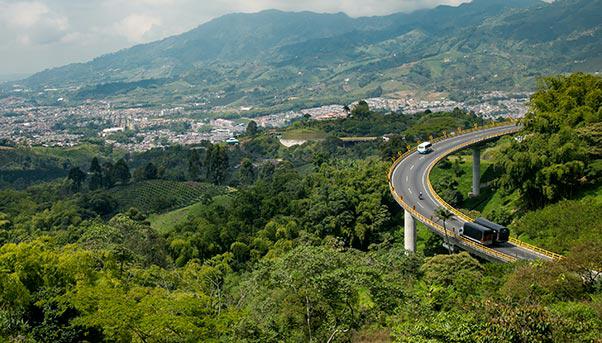
A 10-year endeavour to invest $25 billion with public and private funds. This is the Fourth Generation (4G) Road Infrastructure Program to improve and expand the toll-road network in Colombia. It involves more than 40 projects covering 8,000 kilometres with the promise of enhancing the country’s development.
Colombia’s National Planning Department (Departamento Nacional de Planeación in Spanish) sees the program helping reduce transport costs by 15% to 20% and travel times by 25% to 30%. It is likely to also boost the country’s gross domestic product (GDP) by 1.5% a year, with peaks of 4.5% during the years of construction.
Its immediate impact will be felt in trade, business growth and employment. During the years of construction, the number of jobs expected to be created will likely range between 180,000 and 450,000, providing support to domestic consumption and the economy in general, according to the department.
Economic Boom and Infrastructure Gap
The 4G program has come at an important moment for Colombia, whose decision to improve its road network follows 10 years of uninterrupted economic growth.
In the past decade, pro-capita GDP has more than doubled and direct foreign investment has increased 10 times to the point that the country has reached the highest rankings among Latin American and Caribbean countries in the World Bank’s Doing Business report. The 2017 edition of the report, which measures the ease of doing business in countries in terms of laws and regulations, places Colombia at the top of the category for dealing with construction permits.
The World Bank nevertheless deems the country’s infrastructure to be failing to serve its robust economy. Investment in the sector is equal to only 1.3% of GDP – too meager an amount for such a big country. In the World Economic Forum’s 2015-2016 report on global competitiveness, Colombia ranked 61st in the index – behind the likes of Vietnam, the Philippines and Azerbaijan. It cites the inadequate supply of infrastructure among the top three problems for doing business in the country.
All the more reason for Colombia to equip itself with more modern and efficient infrastructure, capable of responding to the transport needs not only of the population but also of goods.

The Project
More than 80% of internal transport in Colombia is done on roads and highways because the country’s railways are limited and dated, according to the World Bank in an April 2016 brief. In response, the government drafted the 4G program, which seeks to have private investors provide a third of the financing for the projects through public-private partnerships, or PPPs.
To help find the funds and involve international partners, the World Bank has set up the Colombia Capital Market Deep Dive (DD), a project to help strengthen the local bond market, a new infrastructure bank and improve the PPP framework.
Meanwhile, the International Bank for Reconstruction and Development (IBRD) is supplying technical support; the Financiera de Desarrollo Nacional (FDN), an infrastructure development bank in Colombia, will ante up $70 million; while the International Finance Corporation (IFC) will invest $50 million directly and free up another $400 million in various forms of debt financing, such as bonds linked to specific projects, according to the World Bank.
Even More Ambitious
The 4G is part of an even grander scheme of the Colombian government to invest up to $70 billion.
In 2015, President Juan Manuel Santos announced a master plan for intermodal transport that will run until 2030. It foresees upgrading and building links for roads and railways, and expand 31 sea ports and airports in 18 major cities that together produce 85% of the GDP.
The plan should have a big impact on air and sea transport. In Colombia, there are 87 sea and air ports and, thanks to funds set aside by this plan, the government wants to double exports and increase tourist arrivals by sea. It is looking at restructuring ports on the Pacific and Caribbean coasts. As for air transport, Bogotà is expanding its international airport to increase passenger traffic from 27 million to 40 million a year in the next five years.
This is the state of Colombia, a vibrant economy that needs a modern and efficient infrastructure to keep growing.

